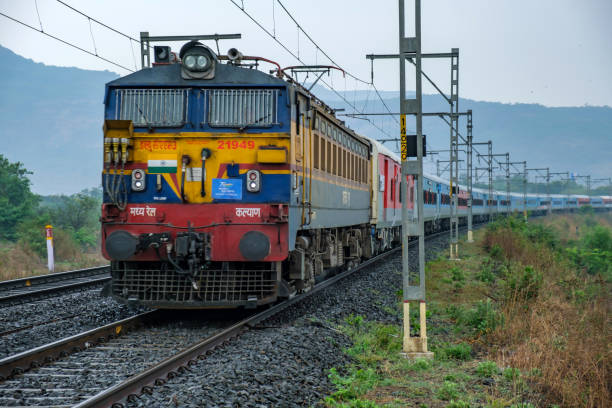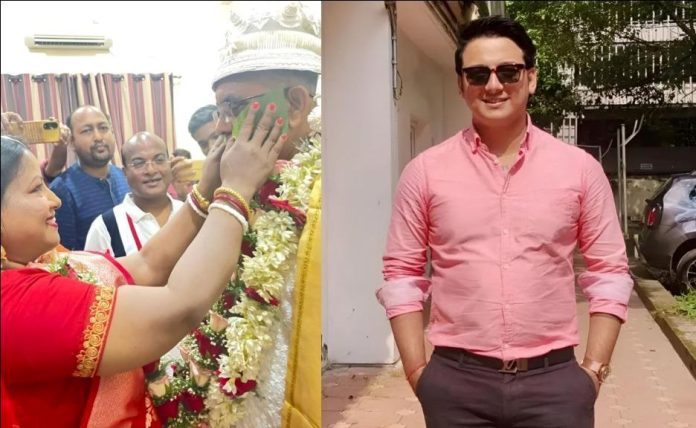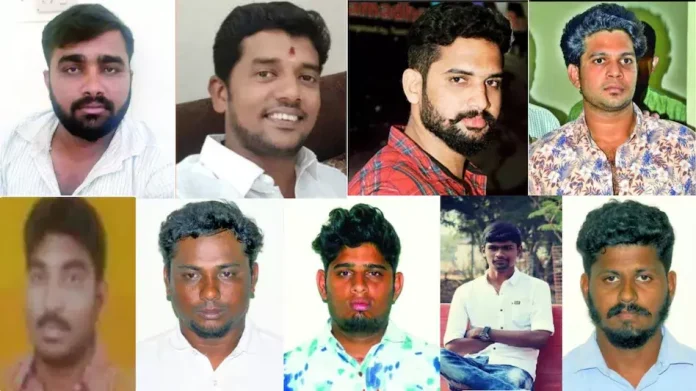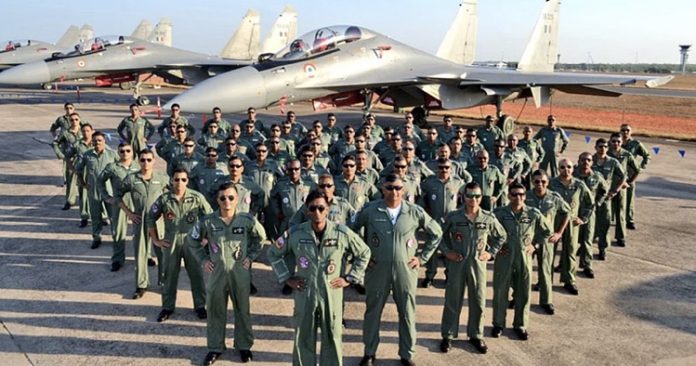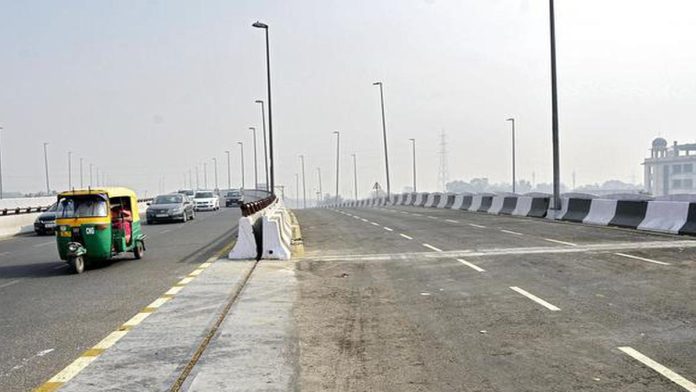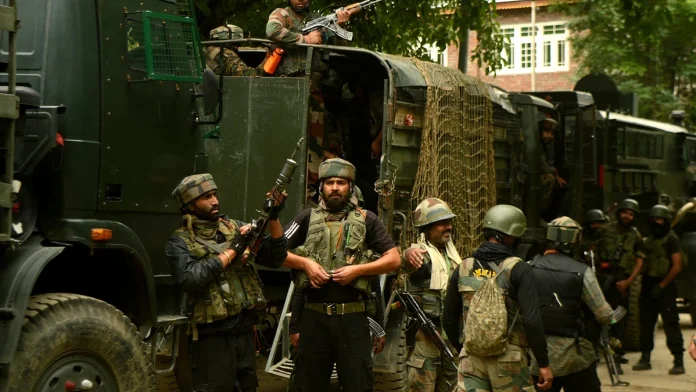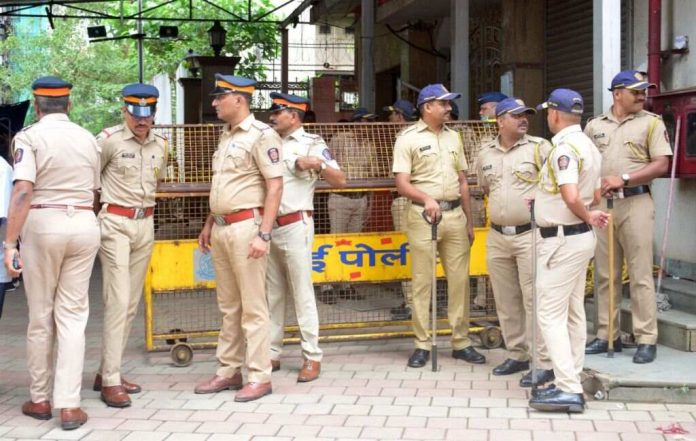‘Ghar Mein Ghus Kar Maarenge’: PM Modi’s Stern Warning to Pakistan
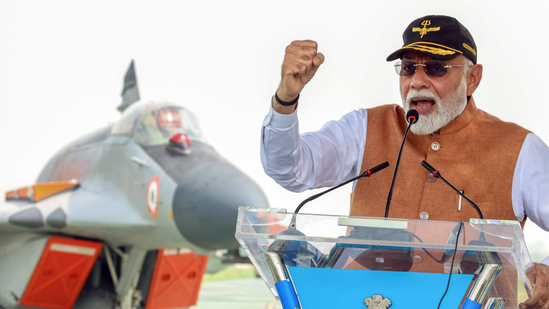
Bengal BJP leader Dilip Ghosh’s stepson found dead near Kolkata
Bengal BJP leader Dilip Ghosh’s stepson, Pritam Dasgupta aka Srinjoy Dasgupta (28) was found dead in his New Town residence near Kolkata on Tuesday. The body was recovered from his Shapurji residence. Pritam was the son of Dilip Ghosh’s wife Rinku Majumdar from her previous marriage.
Rinku, a BJP women’s wing leader, tied the knot with the 60-year-old former state BJP President Dilip Ghosh on April 18 this year.
The 28-year-old, who lived in the Techno PC area was employed at a private IT company. However, whether he lived alone or shared the apartment with someone is yet not known. He was found in an unconscious condition on Tuesday morning.
Reportedly a friend discovered Pritam’s body first and informed his mother Rinku via phone call. When rushed to a nearby hospital, doctors declared him dead on arrival. The family is yet to issue a statement on the matter.
Suicide or murder?
“The cause of the death is not known. That will be ascertained only after the post-mortem examination. We are investigating the matter,” a police officer told media.
Pritam’s body has been sent to Kolkata’s RG Kar Hospital for post-mortem examination. The cause of death will be confirmed once the autopsy report is available. While police is investigating the cause of Pritam’s death, preliminary reports hint at a possibility of suicide.
As per sources, strangulation marks have been found on the neck of the deceased. Police is also probing if the deceased was suffering from mental health issues like depression. His phone is also being checked by the police.
Pritam was “happy” about mother’s wedding
Dilip Ghosh got married to BJP member Rinku Majumdar in a private ceremony on April 18, saying he took the decision to fulfil his mother’s wish. The 60-year-old leader tied the knot in a private ceremony held at his New Town residence near Kolkata. However, Pritam was not seen in attendance on the wedding day.
Pritam’s uncle Paritosh Shil told the media that there was absolutely no sign of discontent in Pritam regarding his mother’s marriage. In fact, he said, the 28-year-old had been very happy about it. After Rinku’s wedding, the family didn’t notice any change in Pritam’s behaviour — he actually seemed more cheerful than before, according to his uncle.
Even though Pritam did not attend his mother’s wedding, he had told the media after the event, “I’m very happy for my mother. She has finally found someone to settle down with, and I’m glad they share the same values and beliefs.”
As of now, no formal complaint has been made to the police, neither from Rinku Majumdar nor from any other member of the deceased’s family.
Prime Minister Modi Visits Adampur Airbase After Operation Sindoor, Debunks Pakistan’s Claims
In a significant development early Tuesday morning, Prime Minister Narendra Modi paid a surprise visit to the Adampur Air Force Station near Jalandhar, Punjab. This visit comes just a day after his national address following the successful Operation Sindoor, which marked a decisive shift in India’s approach to counter-terrorism and relations with Pakistan.
The Prime Minister landed at Adampur airport at around 6:15 am and spent nearly an hour at the airbase. During his visit, he interacted with Indian Air Force personnel and senior officers, gathering first-hand feedback about the recent operations and the prevailing security situation. He was accompanied by Air Chief Marshal A P Singh, and the visit was kept highly confidential, with even local administration unaware of the Prime Minister’s movements until after his arrival.
Adampur Airbase, India’s second-largest, played a crucial role in ensuring air defence during the recent conflict with Pakistan. It was one of the key bases targeted by Pakistan on the night of May 9-10, following India’s precision strikes on terror camps in Pakistan and Pakistan-occupied Kashmir under Operation Sindoor. Despite Pakistan’s claims that its hypersonic missiles had destroyed the S-400 air defence system at Adampur, the Prime Minister’s visit, with images of an intact S-400 and MiG-29 fighter jets in the background, firmly debunked these allegations.
The Prime Minister described his interaction with the air warriors as a “very special experience”, stating, “India is eternally grateful to our armed forces for everything they do for our nation”. His presence at the airbase was seen as a massive morale booster for the personnel, many of whom had played a direct role in repelling Pakistani drone and missile attacks in recent days.
Operation Sindoor was launched in response to the deadly Pahalgam terror attack in Jammu and Kashmir on April 22, which claimed 26 lives. Under this operation, Indian forces struck nine terror camps deep inside Pakistan and Pakistan-occupied Kashmir, reportedly killing around 100 terrorists. The operation marked a new doctrine in India’s counter-terrorism policy, with the Prime Minister making it clear that India would not tolerate nuclear blackmail and would respond decisively to any future threats.
Pakistan’s Claims
Pakistan, in the aftermath of the Indian strikes, attempted to launch a disinformation campaign, releasing fake images and videos claiming severe damage to the Adampur base and its S-400 system. However, open-source intelligence and satellite imagery reviewed by Indian agencies showed no visible damage to the base’s runway, buildings, or aircraft hangars. The Prime Minister’s visit, and the images shared from the site, served as a direct rebuttal to these false claims.
During his address to the nation, Prime Minister Modi praised the Indian armed forces for their courage and determination, highlighting that Operation Sindoor had set a “new normal” in India’s fight against terrorism. He warned Pakistan that India’s operations had only been paused, not ended, and that future actions would depend on Pakistan’s conduct.
The visit to Adampur Airbase not only reinforced the government’s support for the armed forces but also sent a clear message to adversaries and the international community about India’s resolve and preparedness. As chants of “Bharat Mata ki Jai” and “Vande Mataram” echoed through the airbase, the Prime Minister’s presence stood as a symbol of national unity and unwavering commitment to the country’s security.
All Nine Accused Convicted in 2019 Pollachi Sexual Assault Case
In a significant development in the 2019 Pollachi Sexual assault case, all the nine accused are convicted. On Tuesday, the Mahila Special Court in Coimbatore convicted all nine men accused in the abuse case. The case was one of a kind, gruesome and so troubling that it shocked the entire Tamil Nadu and the nation.
The Mahila Special Court Judge R. Nandhini Devi found the accused guilty of gang rape, repeated sexual abuse, blackmail, and criminal conspiracy. Furthermore the court is expected to pronounce the quantum of punishment at noon.
Widespread Abuse and Digital Blackmail
The gruesome case came to light in the year 2019. The case exposed a disturbing pattern of sexual exploitation by a gang of men in Coimbatore’s Pollachi district. According to reports’ between the year 2016 and 2018, the accused lured young women into traps.
This includes young college going students, into secluded locations under the guise of friendship. Once lured, they then sexually assaulted them, and recorded the acts on their phones. The videos of the assault were then used to blackmail the survivors for further sexual exploitation and money.
After three long years of the gang’s dirty work, a complaint from one of the survivors disclosed the case. Following the complaint, investigations revealed at least eight victims had been targeted. The survivors were counselled and later deposed in court under strict confidentiality protections.
The nine men convicted
-
Thirunavukarasu
-
Sabarirajan alias Rishwanth
-
Vasanthakumar
-
Satheesh
-
Manivannan
-
Haron Paul
-
P. Babu
-
Arulanandam
-
Arun Kumar
According to reports, all the accused are natives of Pollachi and were arrested in 2019. Three of the convicts namely Paul, Babu, and Arulanandam were former AIADMK functionaries. All the convicts are charged under 13 sections of the Indian Penal Code (IPC). They have been held without bail at Salem Central Prison for six years.
The charges include
-
Gang rape
-
Repeated rape
-
Sexual harassment
-
Criminal conspiracy
-
Blackmail
Digital Evidence Played Key Role
Tamil Nadu’s CB-CID investigated the case initially. However, the case was later handed over to the Central Bureau of Investigation (CBI) amid widespread public outrage. The CBI filed a 1,500-page charge sheet in May 2019.
It further presented over 200 documents and 400 digital files in the court. In addition to this, forensic analysis, including retrieval of deleted files and timestamp verification, played a crucial role in proving the charges against the accused.
Surendra Mohan the public prosecutor highlighted the strength of the prosecution’s case. He stated that 48 witnesses were examined and none of them turned hostile. Eight among the survivors bravely testified in court, their identities were kept confidential.
Prosecution Seeks Life Imprisonment
The prosecution sought life imprisonment until death for all nine convicts. He cited the repeated nature of the assaults and the trauma inflicted on the victims. Mohan stated, “This is a rare and heinous case. The survivors were subjected to repeated gang rapes, and we have argued for consecutive life sentences. The Supreme Court has previously ruled that no leniency should be shown in such cases.”
Indian Air Force which made us proud with Operation Sindoor Ranks 4th in the World
The Indian Air Force (IAF) emerged a hero after Operation Sindoor with the nation singing praises for the way they combated the attacks from Pakistan and protected India. Did you know that the Indian Air Force is currently ranked at number 4 among the top 10 most powerful countries by military aircraft fleet in 2025! India ranks above powerful countries like South Korea, Japan, France and Turkey and its arch-rival Pakistan.
To evaluate air force capabilities of countries across the world, Global Firepower 2025 published a ranking based on the total number of aircraft fleets owned by these nations. According to this, India ranks 4 with 2,229 aircrafts after the United States of America (13,043 aircrafts), Russia (4,292 aircrafts) and China (3,309 aircrafts).
Full list of countries owning the maximum military aircraft fleets in 2025:
United States of America – 13,043 aircrafts
Russia – 4,292 aircrafts
China – 3,309 aircrafts
India – 2,229 aircrafts
South Korea – 1,592 aircrafts
Japan – 1,443 aircrafts
Pakistan -1,399 aircrafts
Egypt -1,093 aircrafts
Turkey -1,083 aircrafts
France -976 aircrafts
History of Indian Air Force (IAF)
Established on October 8, 1932, as a supplementary force of the Royal Air Force of Britain, the Indian Air Force over time has evolved into one of the world’s most formidable air forces, playing crucial roles in various military operations and humanitarian missions. The first official flight took place on April 1, 1933, marking the beginning of IAF’s operational journey.
Indian Air Force (IAF) Major Achievements
The IAF has fought conflicts with Pakistan, in 1947-1948, 1965, 1971 (Bangladesh War), and 1999 (Kargil War) in the past and the latest being Operation Sindoor (May 2025) where it successfully neutralised repeated missile and drone attacks from its neighbour.
In 1961, IAF supported the accession of Goa to the Indian Union.
During the Indian Armed Forces battle against the Chinese Army (Sino-Indian War) in 1962, the Indian Air Force played a critical role.
In 1984, the IAF helped capture the Siachen Glacier.
Role of Indian Air Force in Operation Sindoor
The Indian Air Force (IAF), in a precision-led campaign between May 8 and 10, conducted strikes on 11 military air bases across Pakistan. Satellite images of the strikes showed extensive damage caused to the neighbouring nation.
The bases hit included Nur Khan (Chaklala), Rafiqui, Murid, Sukkur, Sialkot, Pasrur, Chunian, Sargodha, Skardu, Bholari, and Jacobabad. These sites were chosen for their operational importance, including drone warfare command centres, air defence nodes, and aircraft deployment hubs.
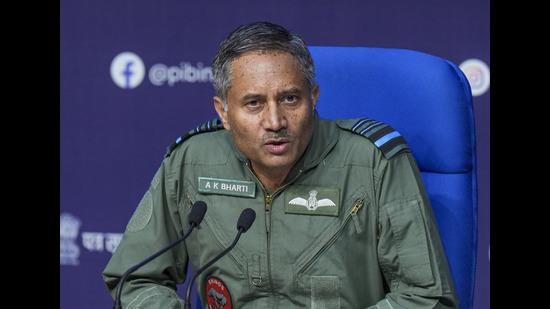
On Sunday (May 12), in a joint press briefing by the Indian Army, the Indian Navy, and the Indian Air Force, Air Marshal AK Bharti emphasized that the Indian response was deliberately focused on high-value targets. Describing how Indian forces carried out a swift, coordinated, and calibrated assault on key Pakistani military infrastructure, he said, “A decision was taken to strike where it would hurt.”
The strikes were directed at key terror camps, resulting in the killing of over 100 terrorists, including high-value targets. The targets included camps in Bahawalpur (Jaish-e-Mohammed) and Muridke (Lashkar-e-Taiba), known as ideological powerhouses of cross-border terrorism. The operation also reportedly resulted in the elimination of terrorist including Yusuf Azhar, Abdul Malik Rauf, and Mudasir Ahmed.
Air Marshal Bharti stated that India’s fight was solely against terrorists and their support networks, not the Pakistani military.

NCRTC Completes Upgrade on Delhi Delhi-Ghaziabad-Meerut Corridor
